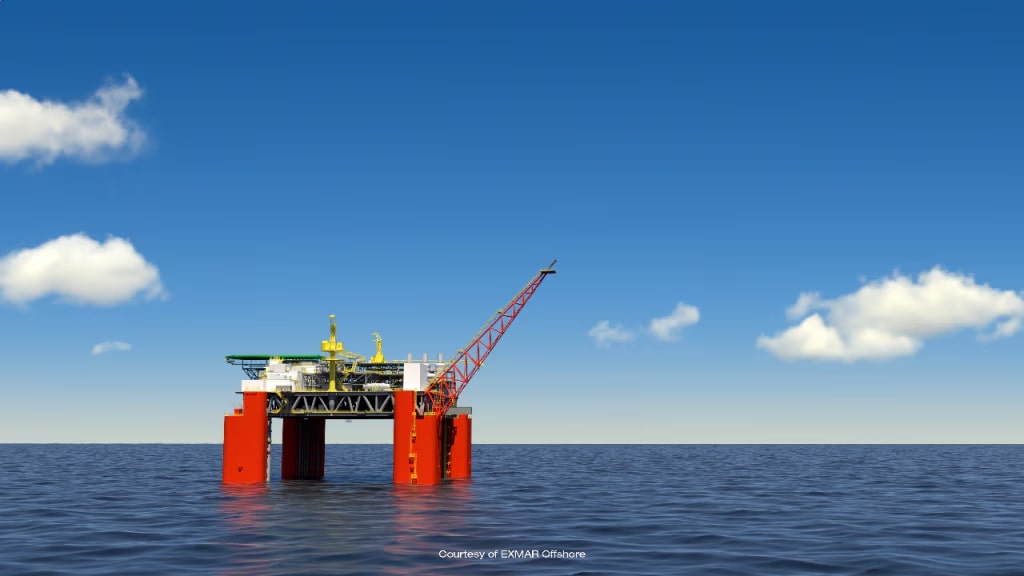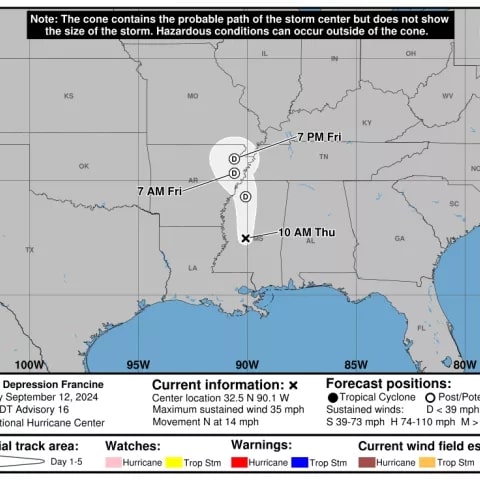From offshore contracts to a monumental court ruling, below is a compilation of the latest headlines in the E&P space.
Contracts and company news
Saipem Gets $4B Offshore EPC Contract in Qatar

QatarEnergy has awarded Saipem a $4 billion offshore engineering, procurement and construction (EPC) contract for the combined COMP3A & COMP3B of the North Field Production Sustainability Offshore Compression Program, Saipem announced Sept. 15. The contract is aimed at sustaining the production of the North Field natural gas reservoir offshore Qatar.
Saipem’s scope of work encompasses the engineering, procurement, fabrication and installation of six platforms and 100 km of corrosion resistant subsea pipelines, 100 km of subsea composite cables, 150 km of fiber optic cables and several other subsea facilities.
This contract follows the EPC package for the North Field Production Sustainability Offshore Compression Complexes Project awarded to Saipem in October 2022.
BP Selects ABS to Support its Deepwater Kaskida Project

ABS will provide classification and engineering verification services for the new semisubmersible production unit at the deepwater Kaskida project in the Gulf of Mexico (GoM), BP announced Sep. 10.
ABS, who has worked with the majority of FPUs in the GoM, will act as the certified verification agent for the U.S. Bureau of Safety and Environmental Enforcement (BSEE). BP has also contracted ABS to be the independent third-party verifier for high-pressure, high-temperature subsea equipment and technology as required by the BSEE.
In addition, ABS will also inspect and approve the design, construction, installation and equipment on behalf of the U.S. Coast Guard.
Askelos Unveils FPSO Structural Performance Management Software for FPSOs
Akselos, a global leader in structural performance management (SPM), launched its new SPM for FPSO 4.0 software on Sept. 11. The software ensures asset performance and uninterrupted operations, extends the life of FPSOs and can reduce opex by up to 35% through inspections and maintenance planning.
Akselos delivers a near real-time, structural twin of the entire FPSO, allowing operators to continuously monitor asset health, identify stress hotspots and run "what if" scenarios to mitigate risks. By integrating operational data like inspection data, metocean data and tank fills, the software provides continuous and on-demand fatigue assessments, reducing the risk of unplanned downtime.
The solution is also compliant with class society standards and integrates seamlessly with existing systems such as inspection data management systems and risk-based inspection workflows.
Chevron Launches New Hydraulic Fluid for Marine, Construction Use
Chevron Corp. introduced its Clarity Bio EliteSyn AW, a hydraulic fluid technology designed to sustainably meet the needs of the marine and construction industries, according to a Sept. 10 release.
Chevron said the hydraulic fluid meets or exceeds the biodegradation, toxicity and bioaccumulation limits set by government regulatory standards.
The product also holds a renewable carbon level of at least 90%. Chevron expects Clarity Bio to eliminate the need to change seals on equipment when switching products, ensuring a “seamless transition for customers.”
Chevron said the product is compliant with EU Ecolabel, U.S. Environmental Protection Agency’s Vessel General Permit (VGP), the Swedish Standard for environmentally acceptable lubricants and the OECD definition of “readily biodegradable.”
"Clarity Bio EliteSyn AW demonstrates our commitment to environmental sustainability without sacrificing performance," said Zach Sutton, specialist in Chevron’s industrial sector. "This next-generation hydraulic fluid not only meets regulatory standards but exceeds expectations in terms of performance, compatibility and longevity due to its renewable base stock formulation."
Corva, Core Geologic Announce Strategic Partnership
Corva and Core Geologic, experts in geological services and subsurface navigation, have entered into a strategic partnership to optimize resource recovery.
Announced Sept. 12, this collaboration plans to enhance geocentric data interpretation, improve cross-discipline communication and sharpen subsurface insights to create faster and more precise decision-making. This is expected to increase drilling efficiency, innovation and collaboration for superior well performance.
HNR Increases Permian Efficiencies with Automation Rollout
In an effort to better operational efficiencies and oil production in the Permian Basin, independent upstream energy company HNR Acquisition Corp. is rolling out improved automation techniques, the company announced Sept. 12.
HNR will conduct a pilot test of a new software application with two of its field operators, allowing the operator to use a single app to identify problems and issue corrective actions, as well as optimize field team routes to wells and tank batteries to reduce miles driven and fuel consumption.
The application will also replace Microsoft Teams as the daily field communicator to tie communications to locations, tasks, actions and outcomes and provide a single source to order parts for maintenance. It will also be able to provide real time monitoring to identify wells not operating normally to accelerate remediation and maintain or increase production. These efficiencies will allow the field crews to bring new wells into production without additional costs.
After the pilot test, the application will be rolled out to all of HNR’s field operators.
Regulatory updates
BSEE Monitors Gulf of Mexico Response to Hurricane Francine

The Bureau of Safety and Environmental Enforcement's (BSEE) hurricane response team continues to monitor offshore oil and gas operators in the Gulf of Mexico in response to the storm. From operator reports, BSEE estimates that approximately 42% of the current oil production and 52% of the current natural gas production in the GoM has been shut-in.
Based on data from offshore operator reports submitted SepT. 13, personnel remain evacuated from 144 production platforms and two of the five non-dynamically positioned rigs in the Gulf. A total of two dynamically positioned rigs have moved off location out of the storm’s path as a precaution, with personnel remaining on board and set to return to the original location once the storm has passed.
Once all standard checks have been completed, production from undamaged facilities will be brought back online immediately. Facilities sustaining damage may take longer to bring back online.
Industry Appeals Gulf of Mexico Court Ruling
After the District of Maryland’s decision to vacate the National Marine Fisheries Services’ (NMFS) Biological Opinion in the GoM, which threatens to halt oil and natural gas production in the Gulf, API, EnerGeo Alliance, the National Ocean Industries Association (NOIA) and Chevron released the following joint statement on Sept. 12.
“American oil and natural gas production in the Gulf of Mexico is a driving force of energy security here in the U.S. and around the world, supports hundreds of thousands of jobs and generates billions for state and local revenue. If this ruling is left uncontested, a critical source of current and future U.S. energy supply could be in jeopardy at a time of persistent inflation and geopolitical instability. We intend to pursue all legal means to prevent the far-reaching consequences of this ruling for Gulf Coast economies and American families that depend on access to affordable, reliable energy.”
According to the U.S. Energy Information Administration, U.S. GoM production accounts for nearly 15% of total U.S. crude oil production. By vacating the 2020 biological opinion without allowing enough time for the NMFS to issue a revised opinion, the court’s decision threatens to significantly slow down or halt all permits for routine, daily operations.
Recommended Reading
The Private Equity Puzzle: Rebuilding Portfolios After M&A Craze
2025-01-28 - In the Haynesville, Delaware and Utica, Post Oak Energy Capital is supporting companies determined to make a profitable footprint.
2025 Pinnacle Award: Christine Ehlig-Economides is a Pioneer in the Field and Classroom
2025-02-27 - University of Houston petroleum engineering professor Christine Ehlig-Economides has left an indelible mark on the industry and blazed a trail for women.
Michael Hillebrand Appointed Chairman of IPAA
2025-01-28 - Oil and gas executive Michael Hillebrand has been appointed chairman of the Independent Petroleum Association of America’s board of directors for a two-year term.
What's Affecting Oil Prices This Week? (Feb. 3, 2025)
2025-02-03 - The Trump administration announced a 10% tariff on Canadian crude exports, but Stratas Advisors does not think the tariffs will have any material impact on Canadian oil production or exports to the U.S.
BP Cuts Over 5% of Workforce to Reduce Costs
2025-01-16 - BP will cut over 5% of its global workforce as part of efforts to reduce costs and rebuild investor confidence.
Comments
Add new comment
This conversation is moderated according to Hart Energy community rules. Please read the rules before joining the discussion. If you’re experiencing any technical problems, please contact our customer care team.




